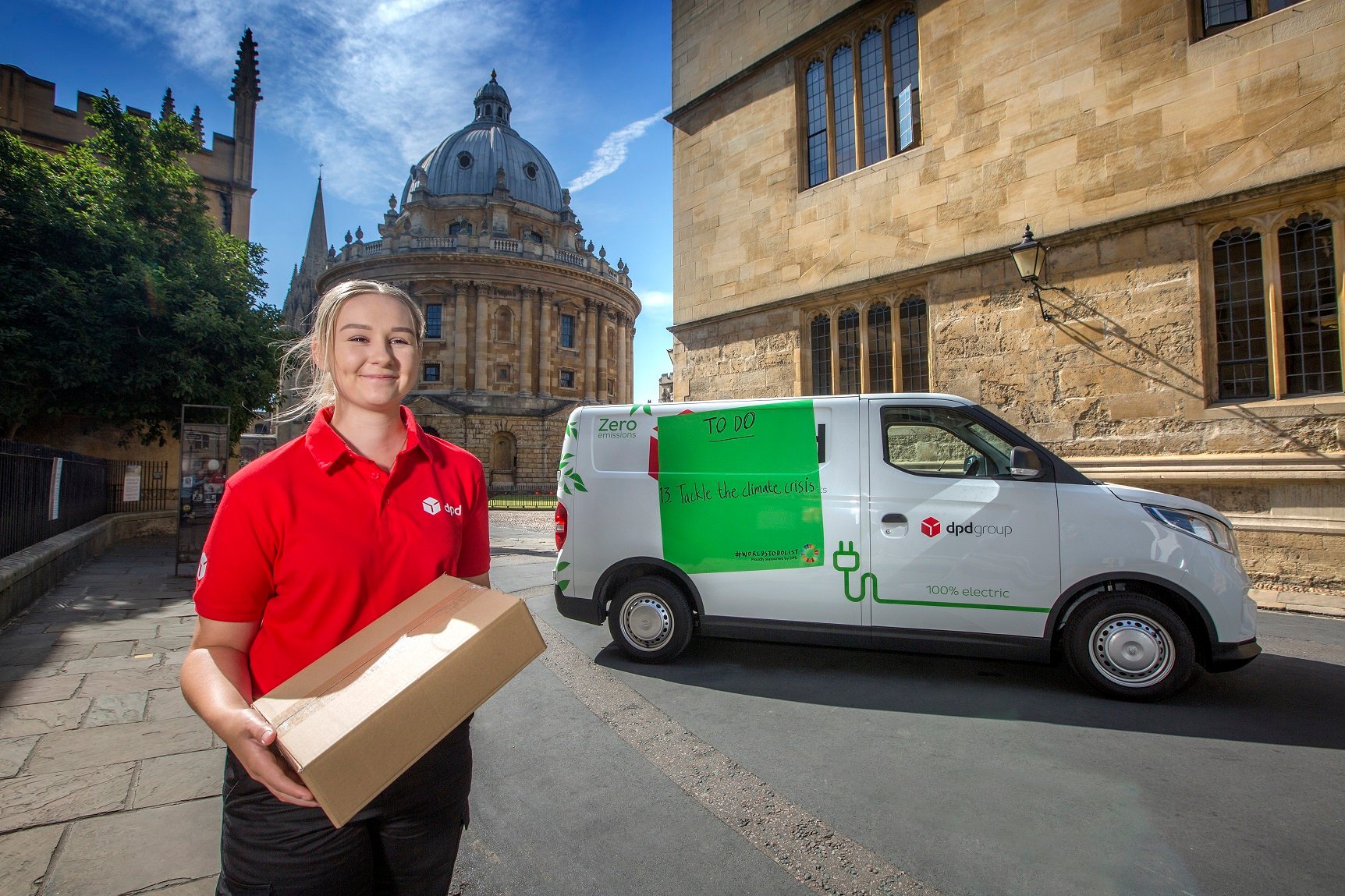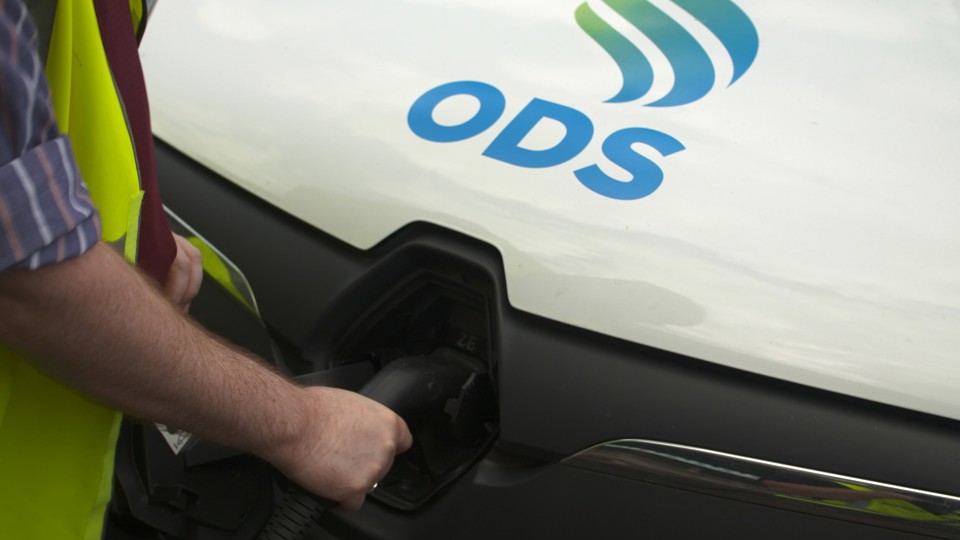Oxford is planning big changes for the way fleets operate in the city with consultations soon to launch over a temporary congestion charge this year, as well as a significantly expanded zero emission zone (ZEZ) in 2027.
Oxfordshire County Council wants to tackle air quality and the growing problem of congestion within the city.
Plans for an expanded ZEZ have been on the cards for over a year, but the temporary congestion charge is a new development that is due to be discussed at a meeting on Tuesday (June 17).
If approved, a public consultation for a congestion charge would start on June 23, with a view to implementing the temporary scheme as quickly as this autumn.
The council has been exploring measures to rapidly alleviate traffic congestion until it can introduce new traffic filter measures.
A daily charge of £5 would allow cars without a permit to go through six planned congestion charge locations on roads in Oxford.
All other vehicles, including vans and heavy goods vehicles (HGVs) would be able to go through at all times without paying the charge.
Oxford is planning big changes for the way fleets operate in the city with consultations soon to launch over a temporary congestion charge this year, as well as a significantly expanded zero emission zone (ZEZ) in 2027.
Oxfordshire County Council wants to tackle air quality and the growing problem of congestion within the city.
Plans for an expanded ZEZ have been on the cards for over a year, but the temporary congestion charge is a new development that is due to be discussed at a meeting on Tuesday (June 17).
If approved, a public consultation for a congestion charge would start on June 23, with a view to implementing the temporary scheme as quickly as this autumn.
The council has been exploring measures to rapidly alleviate traffic congestion until it can introduce new traffic filter measures.
A daily charge of £5 would allow cars without a permit to go through six planned congestion charge locations on roads in Oxford.
All other vehicles, including vans and heavy goods vehicles (HGVs) would be able to go through at all times without paying the charge.
The scheme would be enforced using automatic number plate recognition cameras (ANPR) positioned at the congestion charge locations.
The council said any surplus income from the proposed scheme could be used to fund travel improvements like cheaper bus tickets and parking at park and ride sites.
Congestion charge, traffic filters and ZEZ all linked
The temporary congestion charge is only being introduced as an interim solution before Oxford can introduce six new traffic filters to help reduce congestion.
A traffic filter limits through-traffic along a small section of a road when travelling by certain modes of transport.
Oxford traffic filters will be camera-enforced points on six roads in Oxford and will only apply to cars.
However, these filters can’t be introduced until after work has been completed on Network Rail’s upgrade to Oxford Station, with the key route of Botley Road not due to reopen until next summer.
Speaking to Fleet News, Bryan Evans, senior transport planner at Oxfordshire County Council, explained that any planned expansion to the ZEZ will have to wait for at least one year after the traffic filters have been introduced.
After first going live in February 2022, this puts any plans of an expanded ZEZ to September 2027.
The council has already started pre-consultation engagement on the expanded ZEZ proposals with fleets before launching an official consultation before the end of this year.
Evans said: “The pilot for the ZEZ has shown positive signs, we’re seeing fewer vehicles overall and more zero-emission vans, particularly from operators like DPD and Royal Mail.

“The broader goal is to improve air quality, but we're also achieving reductions in vehicle numbers and a better environment for pedestrians and cyclists,” he added.
The expansion of the ZEZ aligns with the city's goal to become the world's first transport-carbon emission-free city.
Fleet decision-makers are being urged to contribute to the public consultation when it goes live while key operational details remain in development.
Currently limited to a small pilot area of nine central streets, the ZEZ requires non-compliant vehicles to pay a daily charge based on emissions standards.
While the pilot zone impacts relatively few fleet operators due to restricted vehicle access, Oxfordshire County Council is now laying the groundwork for a broader scheme that would extend across most of the city centre.
The ZEZ pilot area has seen improvements in air quality, according to Oxford’s latest data, by as much as 18% year-on-year between September 2021 and September 2022 on specific streets like St Michael’s Street, exceeding the citywide average reduction in NO2 of 8%.
There haven’t been improvements across all nine areas of the ZEZ, but Evans said this can be explained by the fact these areas are only frequented by buses and Oxford is expecting to see improvements for 2023/24 even further after switching the city’s bus fleet to zero emissions.
Still time for fleet engagement
Evans said some of the pre-consultation engagement has been with public sector fleets like the NHS, the University of Oxford, as well as some logistics organisations.
However, he acknowledged there is still time and space for wider fleet involvement.
“Fleets can and should have their say now. We’ve had feedback already about making payment simpler, for example, offering fleet accounts or even an ‘autopay’-style system like in London could be introduced in the future. Those are options we’re seriously exploring for the expansion,” Evans said.
Despite the potential administrative burden for fleet operators, Evans said the council has received little resistance to the scheme in principle.
“Most of the feedback we’ve had from fleet operators is around how to make payments more convenient. The direction of travel towards zero emissions is widely accepted.”
Focus on electrification, not revenue
Evans addressed the criticism from some that one of the key drivers of the ZEZ scheme is to raise revenues for the council, rather than drive a change to improve air quality.
Charges for the Oxford ZEZ will double from August this year from £2 to £4 for vehicles that emit less than 75g/km CO2, from £4 to £8 for vehicles with four or more wheels that meet the Euro 4/IV petrol or Euro 6/VI diesel standard, while all other vehicles will see daily charges go from £10 to £20 a day.
The price increases will at this stage have a fairly small impact due to the current size of the ZEZ, but an expanded area would all but ensure fleets would have to switch to zero emission vans and cars in Oxford to avoid costly daily charges.
He said: “Ideally, we wouldn’t bring in any revenue because everyone would be compliant.
“Our aim is clear – improved air quality. If operators switch to fully electric vehicles or other sustainable modes, they’ll avoid charges altogether.”
He added that the new ZEZ charging model will reflect vehicle size and CO₂ emissions, addressing concerns not just around tailpipe pollution, but also tyre wear and the impact of heavier vehicles.
While the expanded ZEZ is still over two years away, Evans said Oxford welcomes engagement from fleets.
He said: “This scheme will impact more fleet operators as it grows. But we’re open to hearing how we can make it work for them.”
Login to continue reading.
This article is premium content. To view, please register for free or sign in to read it.




















Login to comment
Comments
No comments have been made yet.